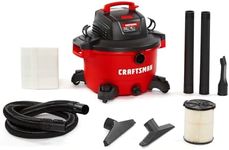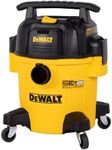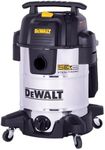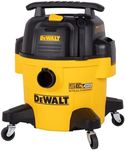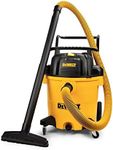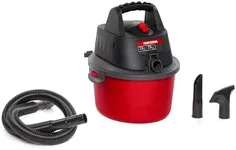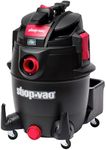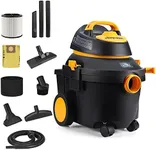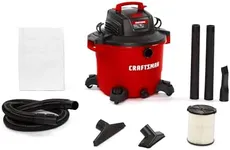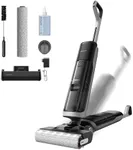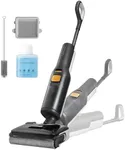Buying Guide for the Best Shop Vacs
When choosing a shop-vac (also known as a wet/dry vacuum), it's important to consider what type of cleanup you'll be doing most often. Shop-vacs are used for a wide variety of tasks, from clearing up large debris on a construction site to smaller spills in your garage or home. Thinking about where and how you'll use your shop-vac can help you focus on the features that matter most. It's not always about picking the most powerful or largest model—it's about finding one that fits your actual needs for portability, capacity, and the types of materials you'll be vacuuming.Tank CapacityTank capacity refers to how much debris or liquid a shop-vac can hold before it needs to be emptied. This is usually measured in gallons. Small tanks (about 1-6 gallons) are lightweight and good for minor spills or quick cleanups around the house, making them easy to move around. Medium tanks (about 6-12 gallons) strike a balance between portability and storage capacity, suitable for larger messes without being too heavy. Large tanks (over 12 gallons) are best for big jobs in workshops or on job sites but are bulkier and harder to store. Consider what types of messes you'll deal with most often, and pick a size that matches the frequency and scale of your cleaning tasks.
Horsepower (HP) or Motor PowerHorsepower or motor power indicates the strength of the vacuum's suction. More power can mean better performance when picking up heavy debris or wet messes but also comes with increased weight and noise. Lower power models are usually fine for light tasks and are quieter. Medium power handles most household and garage cleanups. High power is best reserved for demanding jobs like construction debris or flooding. Think about the types of messes you expect to clean up most—if you’re mostly dealing with dust and small particles, a lower power can be sufficient, but if you’ll be tackling larger debris or liquids, a higher powered model may be necessary.
Type of FiltrationFiltration refers to how well the shop-vac traps dust, dirt, and allergens. Basic models often have standard filters for larger debris, while higher-end models may feature HEPA filters, which are better for trapping tiny particles and allergens. Foam filters are common for wet pickups. If you have allergies or work in environments with fine dust, look for improved or HEPA filtration. If you mainly pick up large, non-hazardous debris, standard filters will suffice. Match the filtration level to your environment and any health needs.
Portability and SizeThe size and design of the shop-vac affect how easy it is to move, store, and operate. Smaller, more portable units are great if you’ll carry the vacuum around your home or vehicle. Larger models with bigger tanks are heavier, so look for wheels and sturdy handles if you need to move them across big spaces. Think about where you’ll store the vacuum and how far you’ll need to move it, as portability can be just as important as power for many users.
Attachments and AccessoriesShop-vacs often come with a variety of attachments like extension wands, crevice tools, and specialized nozzles. The right attachments make it easier to handle different cleaning tasks and reach tight spaces. Some shop-vacs have optional kits for cleaning up liquids, while others may include tools for cleaning cars or upholstery. Think about the surfaces and spaces you’ll be cleaning and make sure the shop-vac you choose includes or can accept accessories suited to your needs.
Cord and Hose LengthCord and hose length determine how far you can reach without unplugging or moving the shop-vac. Shorter hoses and cords are fine for small areas, but if you’re cleaning large rooms, vehicles, or workspaces, longer cords and hoses reduce hassle. Consider the typical distance from your power outlet to where you'll clean and select lengths that provide comfortable reach for your space.
Wet vs. Dry CapabilityNot all vacuums handle both wet and dry messes, but most shop-vacs do. Some are better at handling large amounts of water, while others may be limited to dry debris. Check the product’s capability and make sure it meets your needs, especially if you plan to use it for cleaning up spills, leaks, or flooded areas.
